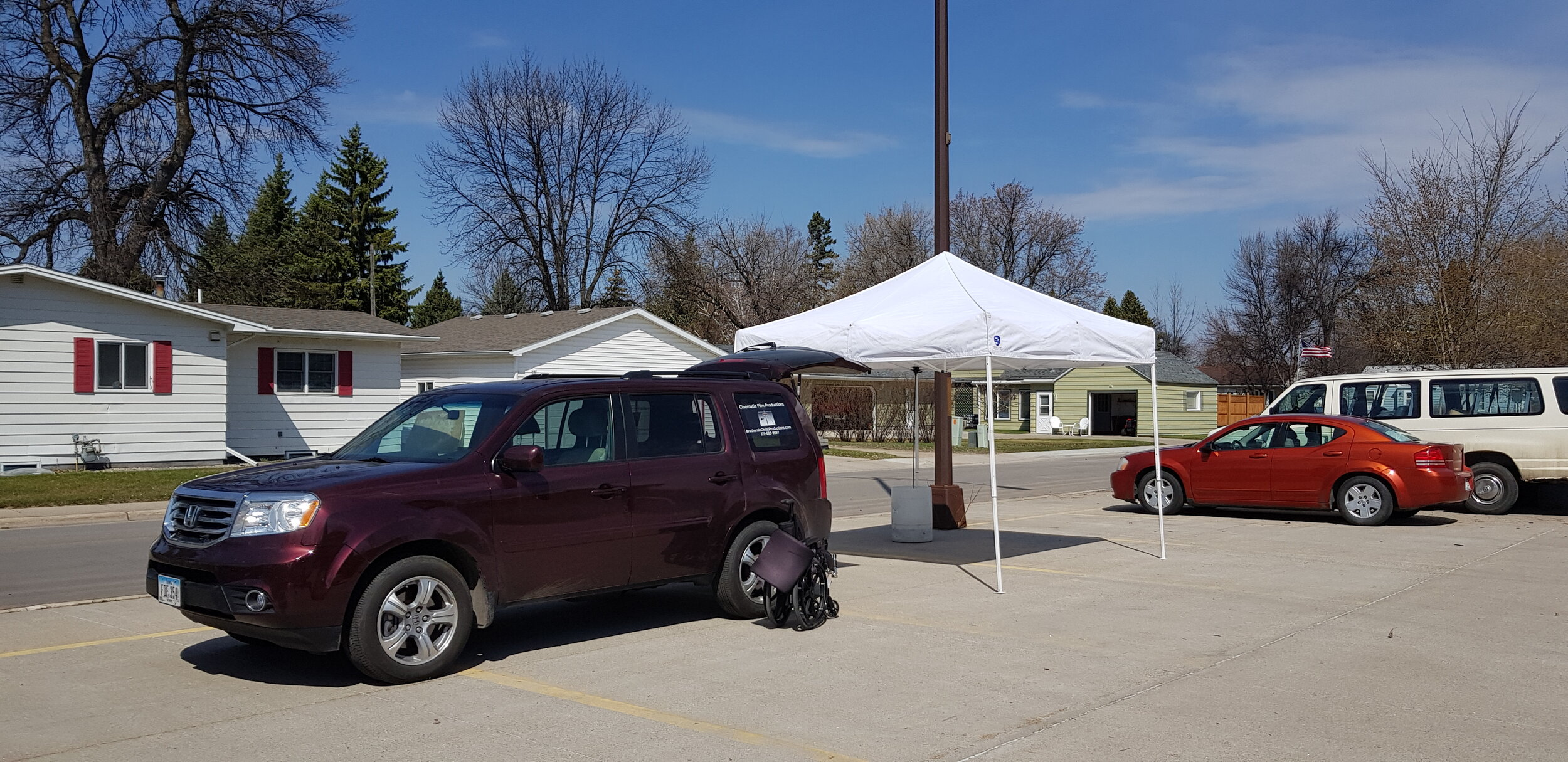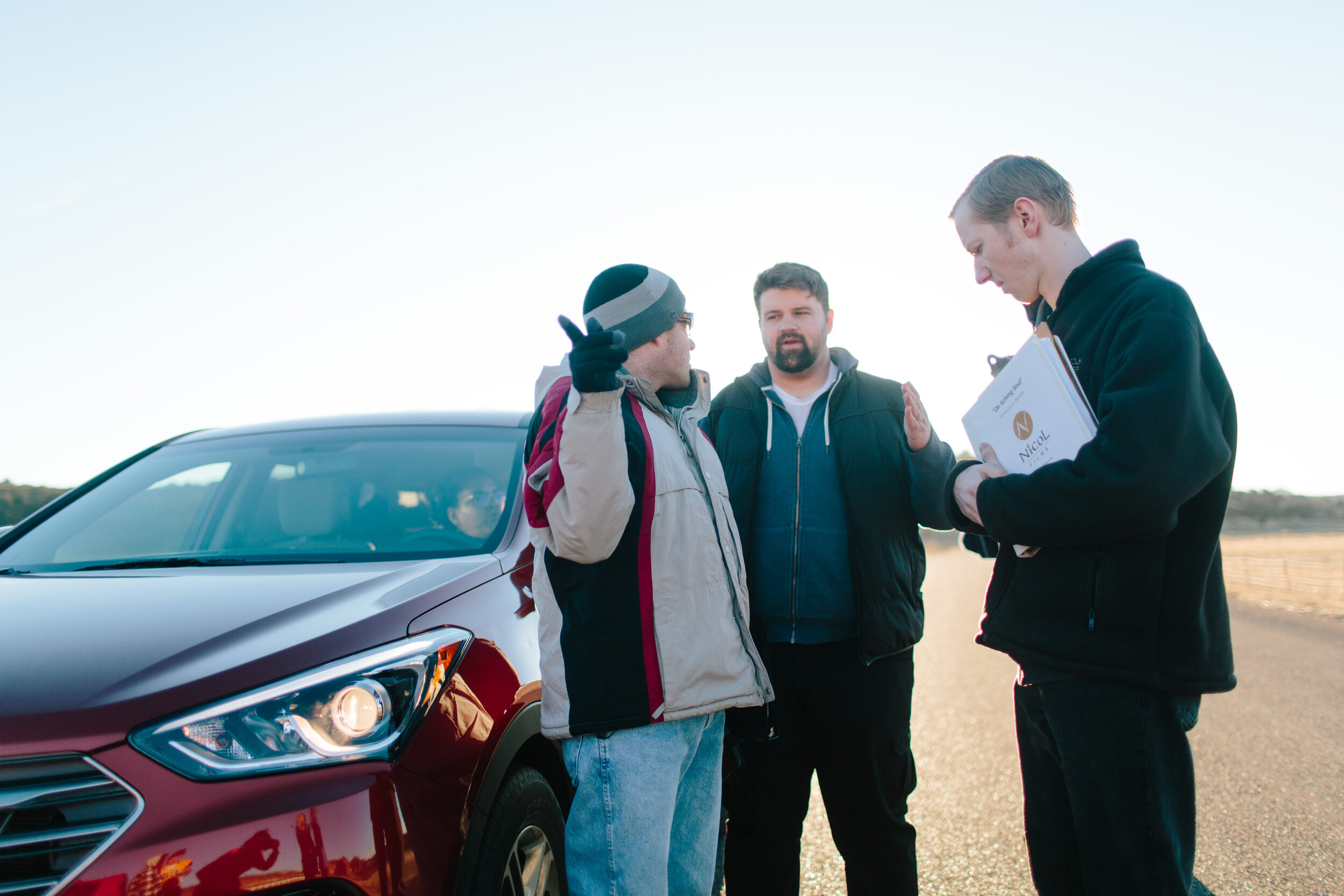Producer Thoughts: Tips for Finding Great Film Locations
Sun rays hit the mountain from a summit location of the 2019 Motion University Official Production.
When it comes to real estate what is the one phrase you always hear? “Location, Location, Location.” In filmmaking it is no different. Whether it’s a teenager’s bedroom, a garbage strewn alley or a mountain summit, the right location can bring your film to life and greatly increase the production quality of even lower budget shorts, commercials and features. But what goes into finding those locations and more importantly what keeps you from getting kicked out of those locations?
Finding the perfect location, like every aspect of filmmaking, starts in pre-production. Before any scouts are done or paperwork is filed you need to familiarize yourself with the script and the director’s vision for the story. As you study the script here are a few of the important notes and information to take keep track of.
1.) How many locations are there? Is the whole film done in one location or do you have several different locations?
2.) What happens in each location? Do the characters dig through a closet, look out a window, walk down stairs, etc. All of these are important factors you have to keep in mind when scouting potential locations.
3.) How many characters are in each scene? This one may seem weird but if the script calls for 12 people to be in a dining room, you’re going to have to find a location big enough for all those people plus all the lights, cameras and crew it takes to bring the scene to life.
4.) What time of day does the scene take place? If the scene is supposed to take place at night, how hard will it be to black out the windows to shoot it during the day. Are there a lot of lights around that could cause problems? Which way does the sun rise and set? You don’t want to climb a mountain for a sunrise shot just for the sun to come up from the other direction.
Once you understand the director’s vision and what the script calls for another important detail to find out is what is your locations budget. Do you have to find locations that will let you film free of charge or are you able to afford paying the locations for opening up their doors to you. Securing locations for free can be great but doesn’t always work out. A lot of businesses will need you to cover the costs of having an employee on site and the extra utility costs that comes with an army of filmmakers invading their workspace.
Insurance can also be an essential for securing locations. While your church or friend’s house might let you film at their place for free most businesses and public places will not let you film there without proof of insurance. Knowing the extent of the coverage can be important too. I’ve shot at many locations that as long as you could show them proof of insurance they were on board. However, a few locations, like the Grand Canyon, required a specific amount of liability coverage before they would agree to the request. Other locations will want themselves specifically listed as additionally insured on the policy so knowing how to get that done and getting that information to the location owner can be very helpful.
Working as the locations point man with park rangers at the Grand Canyon required extra attention to communication and high-quality execution from the cast/crew
Once all the prep work is done you can finally start the scouting portion of the project. This can be a super fun and creative time in the filmmaking process but it can also be frustrating. On a recent shoot I did I went through about two dozen homeowners before we found a location that met the production’s needs, was available when we needed it and was located close enough to where the cast and crew were staying.
Don’t get me wrong though, the scouting can be fun. From spending time on Google looking at pictures and satellite images to meeting new people and thinking of creative ways a location could help the film artistically, technically or logistically. For example, a film may call for you to see parts of 5 different character’s houses. But what rooms are actually shown for each character? I had exactly this problem on one short film I was on. Because each character was seen in different rooms of their house, we were able to film the scenes for all five characters at just two different houses. The rooms needed were two living rooms, a garage, a bathroom and a den. Sometimes though you actually need to shoot at multiple locations for one location. On another short I directed, we were at one location for all of the interiors of the house, but we filmed the exteriors at a second location. While situations like these aren’t always preferred sometimes budget, time-frame or accessibility dictate where you can shoot.
Another common mistake of beginning filmmakers is focusing too much on how the location might look on screen while forgetting about the needs of the crew. Here are a few things to keep in mind when scouting locations in regards to the crew.
1.) The bathroom situation. Will there be bathrooms on site for the crew to use and for actors to get into wardrobe? If not, how far away is the nearest bathroom, does production have the budget to bring in port-a-johns for the shoot? One set a number of friends of mine were on found the only restrooms a mile away on the other side of the cemetery.
2.) Parking. Can crew vehicles park near the location or not? While a five-minute walk doesn’t sound like much, when you’re behind schedule and have to wait for a new battery to arrive from the camera van you might be thinking differently. On one shoot I gripped we were filming on the third floor of a building that didn’t have an elevator. So, we had to lug all the lights, stands, dolly tracks and more up and down the stairs, both a time-consuming and tiring process.
3.) Shade. If you’re filming at an outdoor location is there shade so that the actors don’t get burned? A bad sunburn and tan can ruin the continuity of a film. Shade is also important for your crew to be able to duck under when they are not needed on set.
A shade structure set up for the cast and crew on the set of Fantasmil Films short film Wheelchair
4.) Power. Does the location you are filming at have the needed circuits for all the power the lights, batteries and other gear need to run or will you have to bring in a generator? And don’t forget power outlets. I’ve found that many older houses don’t always have outlets on the outside, so your only option is to run power from inside the house which might mean needing more stingers.
So, what comes next? You’ve studied the script, found the perfect location and gotten the release signed. You’ve done everything right? All that’s left is to show up and shoot. Not quite. Between the time you sign the release and show up to tech scout or shoot communication is vital. I’ve heard of numerous sets, and it has happened on my shoots, where there wasn’t good communication and the location forgot when you were coming to film. This can lead to the location being locked up and having to wait for someone to arrive to unlock it or that other events might be going on that could conflict with your shooting. Learning how the location contact best communicates is vital. Some location owners will be great with emails, while others never check their emails and need to be called on the phone and yet others will just want to communicate via text message. Knowing how they communicate is vital, especially when it comes to last minute changes that can occur because of weather, travel hiccups or actor availability.
Finally, after all this the day of filming has arrived and while the bulk of the location work is done there are still a few things to remember that will help with the filming process.
1.) Have a location point person. Whether this is your location manager, or on smaller sets the AD or Producer you should only have limited crew in contact with the location owner. This will help with the chain command on set as everyone that has questions or concerns about the location is bringing them to one person. It will also help not overwhelm the location owner with six or seven different people contacting them.
Locations Manager, Micah Versemann, discuss the next shot with Director Daniel Nuckols and 1st AD Brayden Klassen before communicating with law enforcement about closing the road on the set of Oh Aching Soul
2.) Keep the contact person up to date. As the filming day proceeds keep the contact up to date. If you’re running two hours behind at lunch let them know so that they don’t show up to lock up only to find you still need more time.
3.) Be honest about any damages or troubles you had. One of the worst things you can do while filming at a location is to damage something and try to hide it or cover it up. Whether it is a scratch on the wall, a broken window or tripping the breaker let the location owner know. Sometimes it might be no big deal. They might have extra paint to touch up the wall, however; they might have sensitive equipment that could have been affected by the breaker getting tripped that they need to check.
4.) Leave the location better than you found it. When it comes to wrapping out of the location, the location manager should be the last person out after making sure that the location is left cleaner than you found it. This could mean vacuuming, taking out the trash, wiping down counters or sinks and putting all furniture back where it originally was. A location owners biggest fear is what their property will be like when you leave. Along with that, it never hurts to leave a thank you card signed by members of the production with the location owner for allowing you to shoot there.
Locations can be an amazing part of any film and well worth the challenge it takes to secure them. Yes, there will be problems and things you couldn’t predict, but if there is only one thing you take away from reading this it would be - communicate. Communicate with the location owner and communicate with the crew about location concerns. By doing that you will solve 99% of the problems that will arise and you will be able to find that perfect sunset.
Cast and crew photo after wrapping filming at the Grand Canyon for Nicol Films, Oh Aching Soul.




